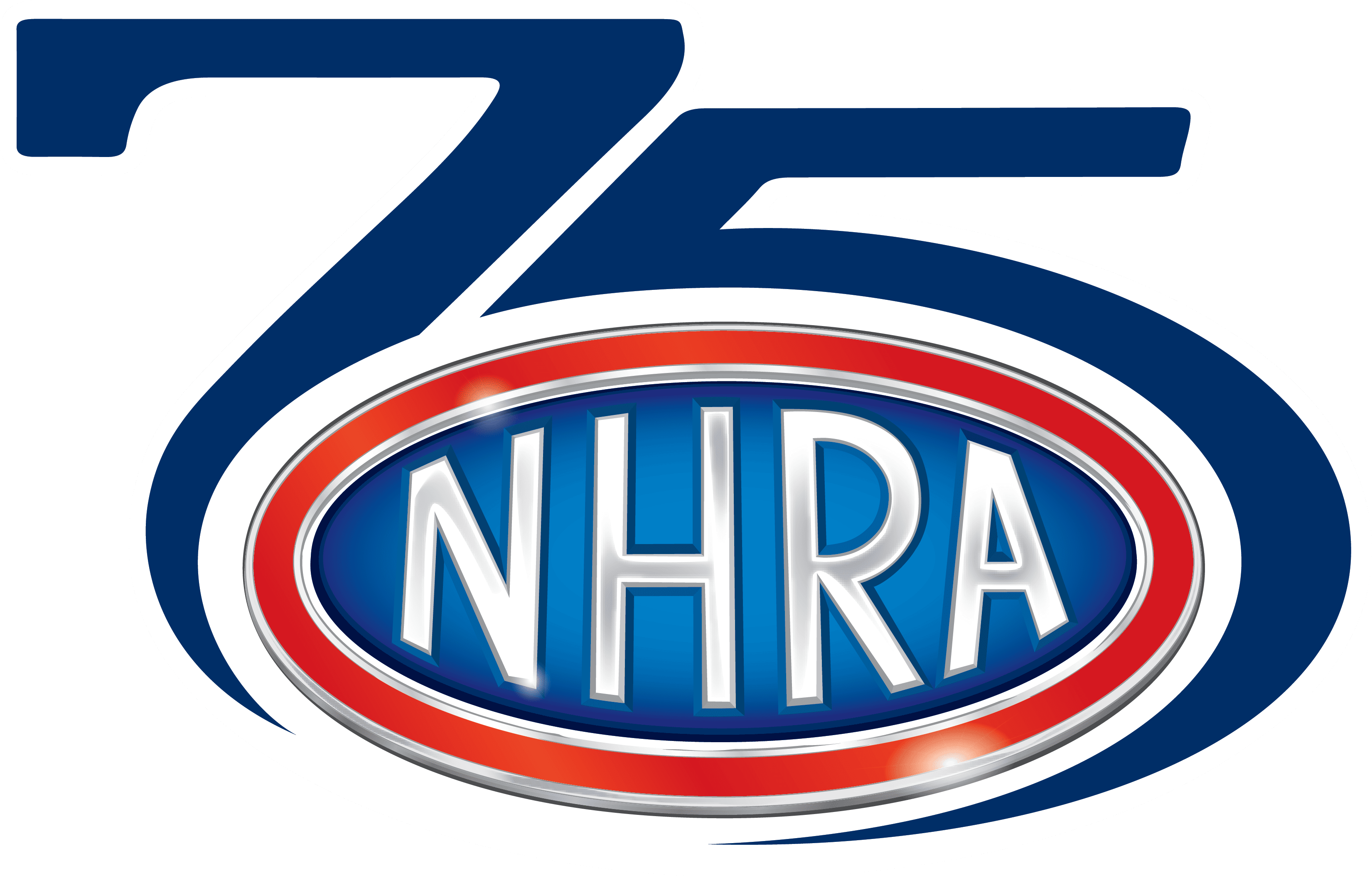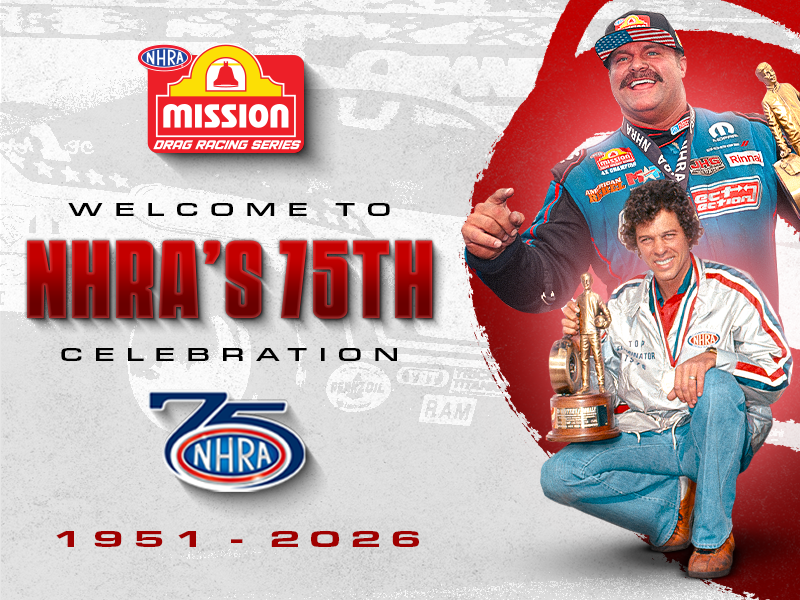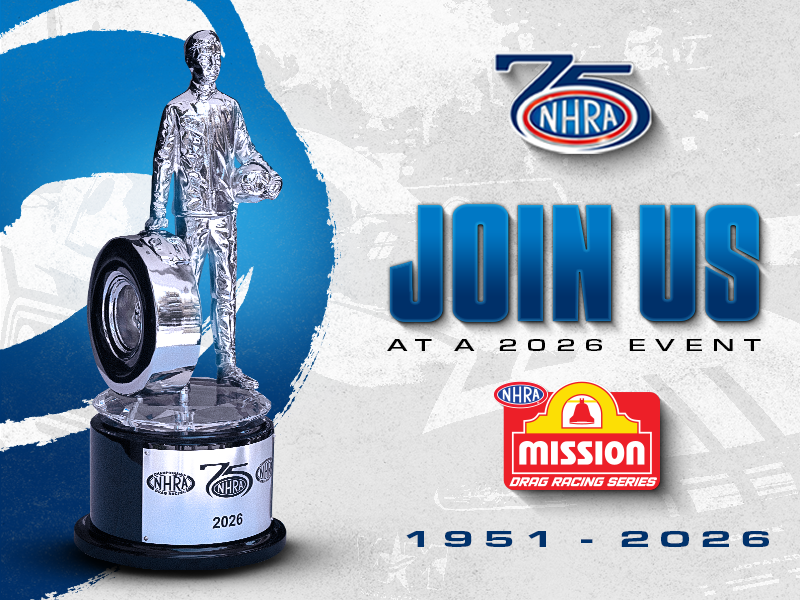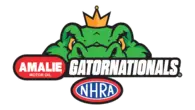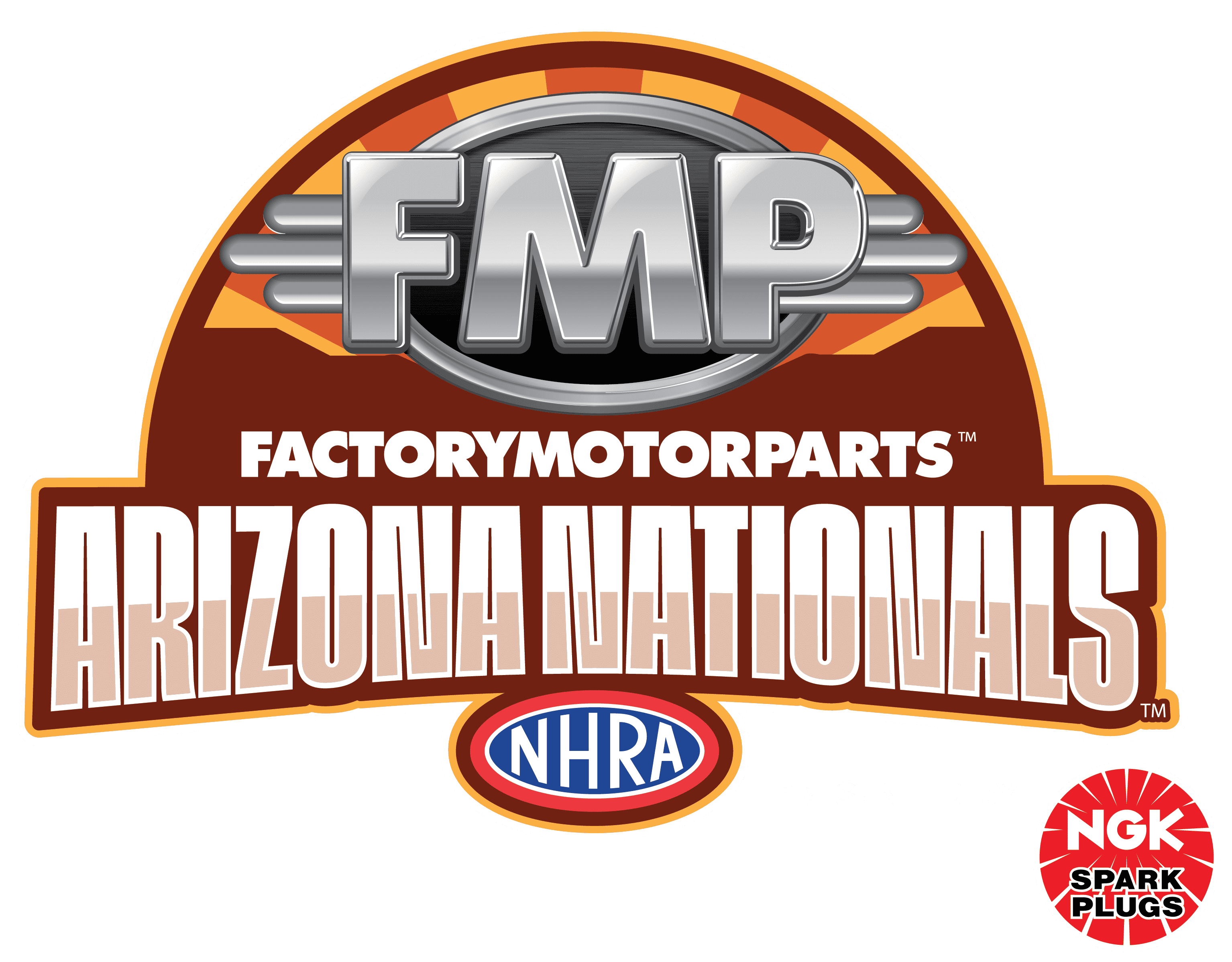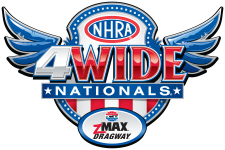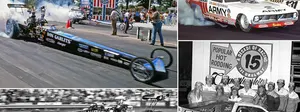Feedback, follow-up, and fallen friends
 |
 |
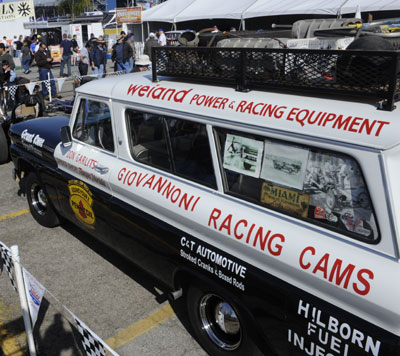 |
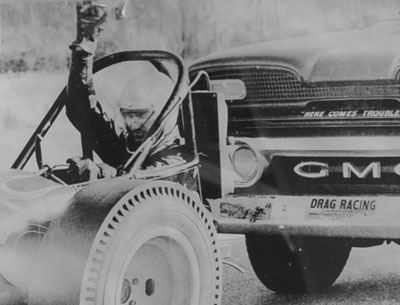
Jan. 18, 1961, at Golden Triangle strip in Florida, according to the caption
|
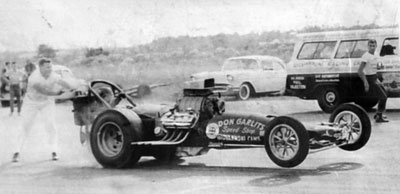 |
Welcome back, my friends, to the nostalgia that never ends, at least when it comes to feedback and insights from the Insider Nation. I've said it before and I'll say it again, this column wouldn’t be half of what it is were it not for your generous and knowledgeable input, memories, and photos. To wit …
My old buddy Jim Hill, whose knowledge of early Florida drag racing may be second to none, dropped me an interesting note about the push truck that Don Garlits was using to fire Swamp Rat V in the Winternationals Cacklefest. He said he couldn't really tell based on the cropped photo I posted Tuesday, "but I'm betting it was another of Garlits' favorite mid-'60s GMC Carryall truck/vans."
I forwarded Jim the photo at top right, taken by National DRAGSTER Assistant Photo Editor Jerry Foss, and he confirmed that that was the truck he was envisioning. I dug up some other photos from the weekend and zoomed in and cropped in to some photographs that Garlits had taped inside the back windows of the car showing the truck in action in the 1960s.
"Before such amenities as crew cabs and enclosed trailers, racers like Garlits usually traveled with their race car strapped to an open trailer, a canvas covering the engine, which was usually the only bullet they had," he wrote. "The quality of these trailers was often suspect. Most were homemade on a flat garage floor, stick-welded, and rudimentary, at best.
"Tow/push-start vehicles were generally of the potluck variety, or whatever was available. Pickups were popular, as were big comfy station wagons. Because he often towed long distances to events and match race dates, Garlits traveled with as much as possible for a tour that might last several weeks away from his Tampa home. Thus was born the need for a sturdy, enclosed vehicle to carry himself, a helper, spare parts, tires, and fuel, and often wife/helper Pat and their daughters.
"For several years, that function was ably handled by a GMC Carryall truck, a pickup with lots of covered space and windows. These vehicles needed power and torque sufficient to haul a trailer and provide the 40-plus-mph speed needed to push-start 'Big Daddy's' nitro-fueled hot rods. Such chores were capably handled by the GMC V-6.
"While today's V-6 engines are diminutive little hummers usually of 4 liters or less, the standard GMC V-6 was a pushrod monster of 305 cubic inches. It boasted a 4.250-inch bore and 3.580-inch stroke and was designed to be a heavy-duty truck powerplant, with maximum torque and reliability ... sort of an 'anti-diesel.' This engine design was later enlarged to 351-, 379-, 401-, 432-, and 478-cubic-inch versions. There was also a unique 702-inch design that bolted together a pair of GMC V-6 engines with a common block and four cylinder heads. It powered Minuteman missile carriers during the deep-freeze days of the Cold War. Talk about bizarre!
"Garlits' Tampa Top Fuel colleagues Art Malone and Val LaPorte saw that 'Big' had stumbled on to something with the GMC. They bought their own Carryalls and likewise logged hundreds of thousands of miles towing from sea to shining sea."
Thanks for the insight, Jim!

 |
Robert Nielsen's Fan Fotos of the early SoCal door cars and the buzz they created continues to have "legs," as we say in the entertainment business, and Nielsen and others are responding to those comments.
Mark Wallace said that seeing the Falcons of Nielsen and Tom Nicklin brought to mind another early Ford named Just Falcon Around, and Nielsen dug through his archives for this photo of the car, which he says was a '63 similar to his own ("except it was MUCH faster and also had a 289 in it") and was owned by the Gibbs family; a father and son took turns driving it and owned a Chevron gas station in Woodland Hills, Calif., where Nielsen lived. Nielsen couldn't remember either of their first names but thought that the elder Gibbs was Gene.
Of the Adam-12 episode mentioned that featured Ted Wells' Ford: Nielsen remembered that the episode was filmed on a Monday and that the producers of the show chose to use Wells’ '54 Ford because in a previous episode, Officer Jim Reed, the character played by Kent McCord, had an early Ford pickup, and this was the closest they could come. Albert Aird chipped in to report that the Camaro in the other lane belonged to Larry Ofria of Valley Head Service.
Nielsen also commented on Cliff Morgan's recollections of Wells' Excedrin Headache #1320 entry. "Ted used to break a lot of driveline parts because of the weight of his car and the power he would make. That is until he ‘bulletproofed’ everything in the driveline. He always said this car give him a lot of headaches early on – or was it that it was a pain in the ass? Ted built me a similar 9-inch Ford rear-end third member for my Falcon – although I used more standard nodular iron housing with a Ford Galaxy drag car pinion carrier. He said this was probably an overkill for the type of horsepower I was making, but he insisted there was only one way to do something, and that was the right way – no shortcuts!"
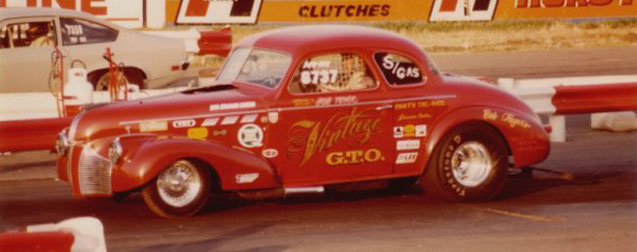 |
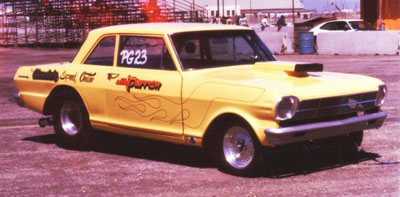 |
Angel Nieves, another OCIR regular, noted in Morgan's comments the mention of the yellow Glendale Speed Center Nova as well as the Vintage G.T.O. (which wasn't a Pontiac GTO) that frequented Lions, and he (who, by the way, is on the lookout for good photos of the Hedman Hedders Maverick Pro Stocker; contact me if you have something) found photos of both of those cars.
"The photo of the Vintage G.T.O [above] is from Orange County Int’l Raceway's second Pro Gas meet in 1980," he said. "Those early Pro Gas meets were a big thing. The other photo is of Jim Parrish's 1962 Nova [right] at a Brotherhood Raceway Park Pro Gas meet in 1980. Jim worked at Glendale Speed Center. If you were from the Los Angeles area, everybody knew him well, including me. What ever happened to Jim Parrish?" Readers?
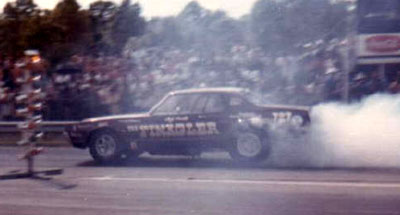 |
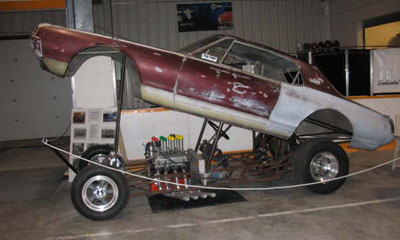 |
Back on the Ford bandwagon, I received a nice note and photos from another Blue Oval diehard, Jeff Foulk, who fielded the Finagler A/FC. "I started racing with a '63 Falcon Sprint and eventually worked up to a '67 Cougar nitro Funny Car," he wrote. "I was a little disappointed last year when you did not include me in your Letter F files. I will admit I was not a big fish and ran very few NHRA events, being engaged primarily in match racing and circuit races. However, I am still proud of our accomplishments as they hold a unique, small niche in drag racing and Funny Car lore.
"With all due respect to Doug Nash, I had the quickest small-block Ford-powered Funny Car, at 8.35, 156.97, injected, on nitro. One of Doug's own early business ads claimed 8.55, 182 with nitro and a blower. We were featured twice in articles in Super Stock magazine, including the one where Editor Jim McCraw licensed in the car. The old cat is presently being restored in Canada." Foulk included a racing magazine clipping of the 8.35 run as evidence; the caption said he did it at Mason-Dixon Dragway en route to winning the track's Jr. Injected Fuel Funny Car Circuit event.

 |
 |
Ever since I posted the photo of the V-8-powered snowblower a few weeks ago, my Inbox has been filling up with snow-related stuff. Eileen Daniels sent the pic above left showing one poor Pennsylvania fan's version of the season opener. My heart weeps for you, my friend. Veteran Stock racer Tom Kasch sent the pic above right showing a really, really cool '57 Nash Metropolitan-bodied snowmobile (it's even for sale, for $10,000) that has a 700cc Yamaha triple beneath the hood.


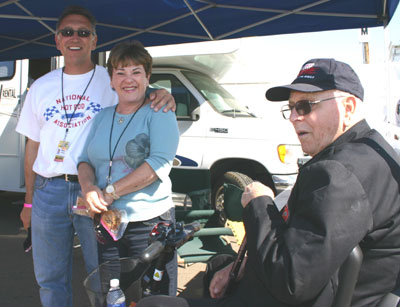 |
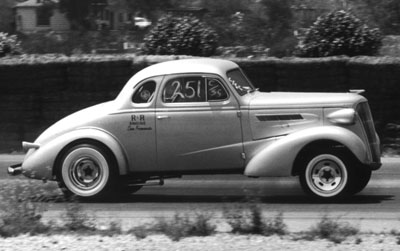 |
We've had more losses among our family in the last few weeks that I'm trying to catch up on. Most of you heard (and read in the NHRA.com Notebook) that we lost "Rocky" Childs on Monday. The cofounder with Jimmy Albert of Childs & Albert was 74 when he passed away and left a long legacy of performance and race cars, including the current Addict cackler.
Bill Holland, who knew Childs for decades, was kind enough to supply background info on Childs as well as a few photos, including the one at right of Childs, right, with wife Sharon and Tony Thacker of the NHRA Museum and the one below it, of Childs' first race car, a '37 Chevy. In addition to leaving his mark on the performance aftermarket, Childs worked in the motion-picture industry for many years doing sets and special-effects work.
Pat Foster, Walt Stevens, Tom Toler, Dwight Salisbury, and Bruce Walker are among those who chauffeured Childs & Albert race cars, which enjoyed good success locally, according to Holland, but the closest one of their cars came to the national event spotlight was Salisbury's runner-up to James Warren at the 1968 Winternationals. Sals couldn’t even contest the final as the car had clutch woes, which allowed Warren to single for the title. Walker was runner-up at the ill-fated PRO meet on Long Island in 1974.
Another couple of losses that went undeservedly under the radar last month were those of former nitro Funny Car owner/drivers Ray Strasser and Ron Sutherland.
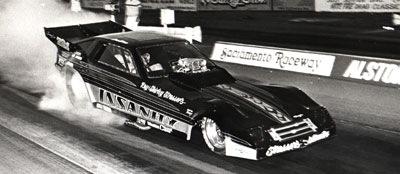 |
Strasser, with wife Shirley, fielded a number of cars, but they're best known for their line of Insanity fuel floppers driven by the likes of Gary Ritter, Dave Uyehara, Ron Fassl, Lorry Azevedo, Richard Hartman, and Rick Williamson. Strasser started out driving his own cars in the 1960s, including a '23-T fuel altered and a AA/Dragster, before switching to Funny Cars in 1973.
According to 70sfunnycars.com, their chassis was homebuilt, and the body was an old Hawaiian body purchased from Roland Leong. The most notorious incident involving the car was the brutal two-car top-end get-together at the 1986 Winternationals between Uyehara and Ron Correnti in Bill "Capt. Crazy" Dunlap's Thunderbird.
After getting out of the Funny Car business in 1992, Strasser returned to racing from 1999 to 2001 with David Baca on an A/Fuel Dragster. Baca ran a 5.22 in the car, which at the time was the quickest ever for the class. Strasser retired again after Baca went on to Top Fuel.
"He was a great man, and our family is grateful for all the things he did for us because if it wasn't for him, we probably never would have gotten back in the saddle," Baca posted on a message board.
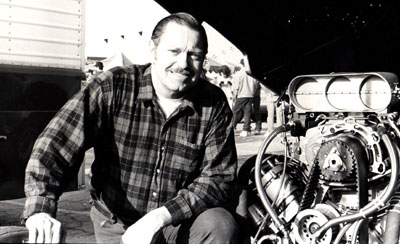 |
 |
Like Strasser, Sutherland was tied to his car's memorable name: Desert Rat. And, like Strasser, the Arizonan first drove his and wife Val's cars, beginning with a cast-iron-powered homebuilt Camaro followed by an ex-Larry Christopherson Nova in which he shared the cockpit with the guy who would become his full-time shoe, Chris Lane.
The Sutherlands were on the sidelines from 1975 until 1984, during which time Ron became a professional hockey referee ("I've probably been in more fights than everyone in the pits put together," he told former ND staffer Todd Veney; wonder if he checked with McCulloch before making that claim.)
Lane drove the Steve Marley-tuned cars (a Regal, a Corvette, and a Cutlass) from 1985 until the 1990 season -- and their shining moment in national event competition was at the 1989 Winternationals, where Lane reached the semifinals after beating R.C. Sherman on a holeshot and Mark Oswald in a pedalfest -- then Sutherland took the controls back and drove through the end of the 1994 season.
Farewell, my fuelish friends.
